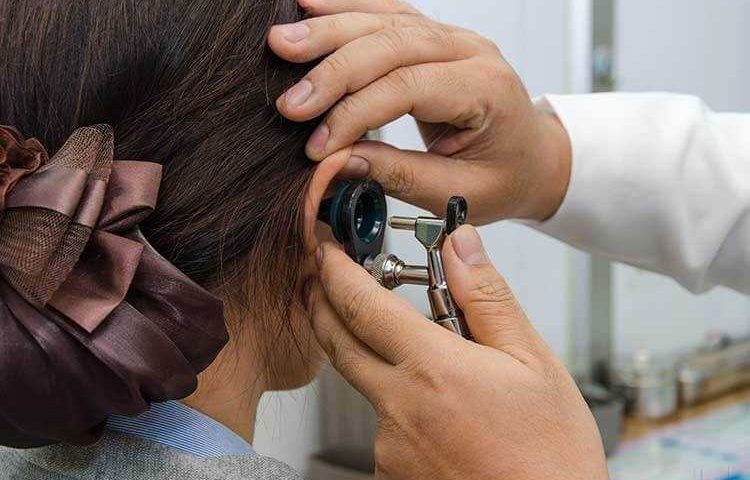Hearing loss treatment in kothrud
Hearing loss can affect anyone at any age and the statistics according to the National Institute on Deafness and Other Communication Disorders are astonishing:
- In the U.S., 15 percent of adults over the age of 18, or 37.5 million people, report having trouble hearing.
- Of adults aged 65-74, 25 percent have a disabling hearing loss, and 50 percent of adults over the age of 75 have a disabling hearing loss.
- Of babies born in the U.S., 2-3 of every 1,000 have a detectable hearing loss in at least one ear.
- Of adults aged 20-69 who could benefit from wearing hearing aids, only 16 percent have tried them.
- The average delay between the time someone is affected by hearing loss and when they finally seek treatment is a long 7 years.
Untreated hearing loss is associated with lower quality of life, depression, social isolation, unemployment, and lower earnings at work, higher medical bills for other health issues, high blood pressure and an even higher risk of dangerous trips and falls. Hearing loss can have far-reaching implications for you and those close to you.
The good news? Hearing loss is well-understood, and there is plenty of hope and abundant help available. By seeking information here, you’ve taken a smart first step in getting the information and help you need.
Symptoms of hearing loss
The symptoms of hearing loss can vary depending on the type of hearing loss, the cause of hearing loss, and the degree of loss.
In general, people who have hearing loss may experience any or all of the following:
- Difficulty understanding everyday conversation
- A feeling of being able to hear but not understand
- Having to turn up the TV or radio
- Asking others to repeat often
- Avoidance of social situations that were once enjoyable
- Increased difficulty communicating in noisy situations like restaurants, lively family gatherings, in the car or in group meetings
- Tinnitus, or ringing and/or buzzing sounds in the ears
Types of hearing loss
There are three main types of hearing loss, and you can read more about each type here.
- Sensorineural hearing loss is the most common type of hearing loss. It is permanent and caused either by damage to tiny hair-like cells in the inner ear or to the auditory nerve. The auditory nerve carries important information about the loudness, pitch, and meaning of sounds to the brain. Most adults with hearing loss have a sensorineural loss. Sensorineural hearing loss can often result in difficulty understanding sound or speech even though it is loud enough to hear.
- Conductive hearing loss is caused by a mechanical problem in the outer or middle ear or an obstruction in the ear canal such as ear wax that blocks sound from getting to the eardrum. It can be permanent but more often, it is temporary and can be medically treated.
- Mixed hearing loss results when there are components of both sensorineural and conductive hearing loss present.
Causes of hearing loss
The cause of a particular hearing loss is important to understand since it factors heavily into determining the right treatment. There are many causes of hearing loss and some causes are responsible for only certain types of hearing loss. For example, earwax blocking the ear canal causes a temporary conductive hearing loss while prolonged exposure to excessively loud noise causes permanent sensorineural hearing loss.
Hearing loss can be caused by any of the following:
- Advancing age (age-related hearing loss is called presbycusis)
- Certain medications sometimes called “ototoxic” drugs
- Trauma or injury to the head
- Genetic factors
- Prolonged exposure to excessively loud noise
- A single episode of acoustic trauma
- Certain illnesses such as mumps, Meniere’s disease, otosclerosis or autoimmune disease
- A tumor on the acoustic nerve or acoustic neuroma
Tests for hearing loss
If you suspect you have a hearing loss, it is important to immediately seek the advice of a qualified hearing healthcare professional. Hearing tests are simple, painless and widely available. Your hearing health professional will begin by conducting a thorough history, and they will ask questions about the challenges you are having, your lifestyle and your communication needs.
There are different types of hearing tests that evaluate specific parts of the auditory system and specialized hearing tests just for infants and toddlers. However, most hearing tests involve a sound-treated room or booth and headphones. Your hearing care professional will also conduct a visual exam of your ear canals and eardrum using a lighted instrument called an otoscope. This will determine if something physical, such as earwax, is contributing to your hearing loss.
Once in the booth, you will be asked to listen to a variety of tones and indicate the softest tones you can hear by pressing a button. This part of the exam is called pure tone audiometry, and it is valuable for determining not only how much hearing loss you have, but which frequencies are most affected. You may also be asked to listen for and repeat words. These speech tests can determine the softest speech sounds you can hear and how well you can understand speech clearly when it is loud enough for you to hear it. Hearing tests are simple, painless and widely available.
If the hearing healthcare professional determines it is necessary, you may also be asked to wear plastic or soft foam earplugs during tests for acoustic reflexes. Another test called tympanometry tests the function of your eardrum.
Test results are marked and presented on a graph called an audiogram. An audiogram displays the softest sounds you can hear at different pitches. These results will enable your hearing healthcare provider to assess your hearing ability and develop the right treatment plan if necessary.
Online hearing checks also are available. While online hearing tests cannot replace the thorough test a hearing healthcare professional provides, they can be a good place to start.
Hearing loss treatments
Hearing loss is a well-understood medical condition that has many tried-and-true treatment options. Finding the right treatment is a joint venture between you and your hearing care professional, and if done properly, takes into consideration the following factors:
- Type of hearing loss
- Severity of hearing loss
- Cause, if known
- Your lifestyle
- Your age and your communication needs
- Your cosmetic preferences
- Your budget
Some types of hearing loss, especially conductive types, can be medically or surgically corrected but others cannot. The most common treatment for sensorineural hearing loss is properly fitted hearing aids. Hearing aids are widely available in a range of styles, colors, sizes, technology levels and price points.
Hearing loss prevention
Just because hearing loss is common doesn’t mean everyone is destined to be affected by it. There are many ways to prevent hearing loss or stop it from getting worse.
Noise-induced hearing loss is very common and many adult cases of hearing loss are due to noise exposure. Some noisy occupations can increase your risk of developing hearing loss. This cause of hearing loss is the easiest type to prevent by limiting exposure to loud noise and wearing hearing protection.
If you already have hearing loss, slow its progression and prevent it from getting worse by avoiding excessive noise exposure.
Hearing protection generally comes in the form of earplugs, earmuffs or noise-canceling headphones. Earplugs are made of acoustically impenetrable materials. When sized correctly and inserted into the ear, they can provide a good deal of hearing protection. Earmuffs or noise-cancellation earphones are others options for hearing protection. These devices offer greater protection against prolonged or higher levels of noise. These devices work by covering the entire ear to block or cancel out loud noises.




